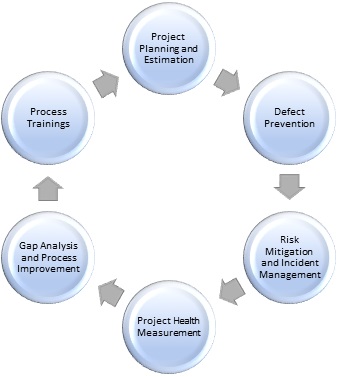When a website, software or an app is developed, it is required to be of use to as many users as possible. Developers strive hard to ensure that the end products are extremely functional and that these bring about significant changes in the way businesses take place. However, with the number of people with disabilities and impairments rising at an alarming rate, it has become imperative for the websites and software to be accessible enough for these people as well. And here comes the importance of the accessibility testing services. But before, you actually focus on the accessibility part of the website, here is a detailed discussion on the types of accessibility testing, their respective pros and cons and their applicability in the industry.
The Types
Presently, there are three options available for testers to ensure the accessibility quotient of a website. These are:
Accessibility Audit, which includes reviewing the website/software and identifying the accessibility issues, if any.
Accessibility Testing, which involves the process through which real disabled users are asked to complete common tasks with the website/software and the problems they face are noted down by a moderator.
Automated Accessibility Testing, which involves an automated program that is made to evaluate the website/software against the accessibility guidelines.
Let us read about them one by one.
Accessibility Audit
In accessibility audit, the experts typically review the website to find out issues with accessibility. Assistive software tools are used in the process to carry out the audit effectively.
When it comes to accuracy, accessibility testing is way more preferred than accessibility audit. However, accessibility audit comes cheap and can be undertaken quickly. The audits lead to reports that offer more comprehensive recommendations.
The primary disadvantage of accessibility audit, on the other hand, is that it does not support knowledge transfer. The reports lack depth and the testers do not get the opportunity to delve deeper into testing the website/software.
Accessibility Testing
Accessibility Testing is considered the most proven method of testing the accessibility quotient of a website/software and there are valid reasons behind this. Here are some of the main advantages of accessibility testing.
To begin with, the process of accessibility testing throws light on the usability aspects too. Since the testing is carried out by involving real life disabled users, certain issues come to the forefront that need attention but are otherwise never detected in an audit.
Reputed testers use a combination of both manual and automated techniques to ensure that the test coverage is satisfactory. Watching the accessibility testing sessions, itself, offers a great learning experience. The team gets a complete and much-needed buy-in into accessibility.
The only disadvantage of accessibility testing, for some organizations, might be the costs involved in the process but when judged from the results it brings about, costs become insignificant for sure.
Automated Accessibility Testing
Automated Accessibility Testing, as the name suggests, involves accessibility testing by means of programmed tools. This method is the least effective one because it can hardly identify real problems. So, it should be restricted to being used for a top- level view of the accessibility aspect of the website/software only.
Which Accessibility Testing Technique Should You Use?
Of course, accessibility testing is the most preferred of all the techniques discussed here. Make sure choosing a reputed organization to carry out the testing of your software so that the end product offers the best user experience.



























